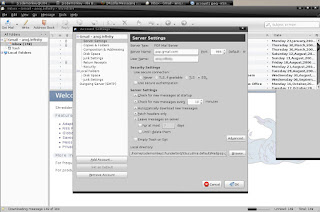
Data is the single most important asset for any modern enterprise. Transaction histories, customer records, asset inventory lists, intellectual property, etc. Even the modern currency is just bits of 1s and 0s flowing through secure networks.
Data centers are the lifelines of such enterprises and companies spend millions, and sometimes billions to manage and run such data processing centers. Lately, due to rising costs in terms of maintenance, capital expenditures, enterprise licenses, power etc, companies are looking for cost effective alternatives.
Analysts predict, by 2012 the power costs for running data centers will jump 13 folds.
60% of power consumed for cooling these centers is wasted due to inefficiency and there is a huge impetus to go green and be more power efficient in the long run.
A common technique followed by modern organizations to control rising costs is to
consolidate a large number of scattered server farms, network rooms, communication centers and data centers around regions to smaller and centralized data centers. Also known as data center consolidation, this is a key driver behind reducing costs and optimizing existing resource by improving the utilization rates. Virtualization solutions like Vmware have also enabled better utilization rates by running multiple Os' and applications on a single server.
Cloud Computing views technology resources and infrastructure as "always on" services, where customers can tap into this vast pool to run their own applications and services. From the customer/end-user’s perspective, they only need to care about the subscription fees charged by the service provider. The Service Level Agreements (SLAs) ensure a minimum level of service quality and support.

Companies like IBM, Google, Amazon and Yahoo are the early promoters of this new phase in computing. Google which invested more than a billion USDs in Capital expenditure last year offers the Google App Engine service whereas Amazons S3 is quite popular among startups and SMEs who can’t afford to run and manage their own data centers.
Cloud computing in some sense, is a mirror of data center consolidation initiatives. Using Economies of Scale, by hosting applications from thousands of customers in centralized data centers, hosts increase the utilization rates of their existing systems, can negotiate with vendors for larger discounts, forecast energy requirements and can have a small set of on-site trained workforce along with a cheap outsourced support staff.
An important question that arises now is what keeps a modern day enterprise to shy away from cloud computing? In fact, isn’t reducing costs the prime focus of companies in such times of recession and economic slowdown?
Well, the answer is that it’s not that straight forward as it seems. Firstly, is it safe to trust a 3rd party to take care of your sensitive business data? Will your customers agree with it? What about regulatory requirements? Countries like Japan and Korea discourage the practice of storing local production data on international servers.
Moreover, some critical business applications can suffer from unacceptable latency issues due to the proximity and bandwidth connecting to the "cloud" network. In such cases, you have to fallback to your existing infrastructure resource or search for other "clouds" that would satisfy your latency requirements.
To sum up, Cloud computing seems like the right way forward. It's takes away the pain that comes with managing your own infrastructure. Along with the major technology breakthroughs, legal processes and controls are also needed in place before it can be accepted into mainstream. Service providers will have to work harder to build the trust amongst customers and guarantee a resilient, secure and stable infrastructure solution.
A lot of work is still needed but at least we are headed in the right direction. 2012 – Era of cloud Computing? Only Time will tell…









